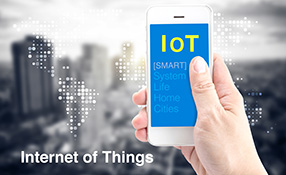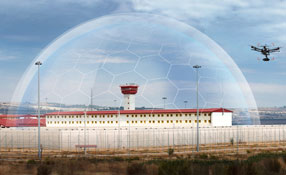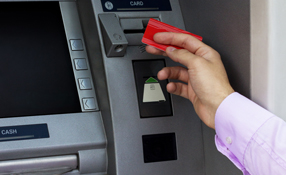Modern home security systems have come of age with innovative technologies that enable homeowners to have complete control over every aspect of the system. MOBOTIX’s Keith Jernigan Sr. and Hunter Fort explore the immense capabilities smart video surveillance technology to make a huge impact on the home automation systems by driving down energy costs as well as storing massive amounts of data.
Home automation is not as new as most people would imagine. It has been around for several decades in luxury homes, but the industry as a whole took some time before gaining popularity. A ‘connected home’ system was seen as hard-to-use, high maintenance and expensive, and the need for professional installation didn’t help with its image. But times have changed. Now the home automation industry is estimated to surpass $21 billion by 2020. With leading companies and retailers getting interested in the opportunity it presents, home automation has captured everyone’s attention. But in all the chatter about its potential, the impact of smart video surveillance solutions for the connected home has been largely ignored.
What Can Video Surveillance Do For The Connected Home?
A smart camera can become the centerpiece of an automated home but since video surveillance is still relatively new, this technology is not yet used in the majority of homes. Its potential to influence the connected home hasn’t yet been fully explored. A huge advantage of a smart video surveillance solution is the analytics component. Video surveillance technology, largely driven by video analytics offerings, can have a significant impact on home automation. Modern video surveillance solutions can help with the reduction of false alarms, make a connected home ‘smarter’, and offer better data retention.
Now the home automation industry is estimated to surpass $21 billion by 2020. With leading companies and retailers getting interested in the opportunity it presents, home automation has captured everyone’s attention |
This is of immense importance. With the help of Edge Processing, businesses are able to store months and months of data in SD cards. Micro SD cards provide good data retention offerings in 30/60/90 day timeframes for home automation environments, and provide usable intelligence to the automated home. Smart cameras are everywhere and they are churning out massive amounts of data that will undoubtedly become overwhelming if the home automation system doesn’t have a video analytics solution to make sense of all that information. Smart cameras with analytics capabilities will help to avoid a data overload. Intelligent video surveillance and analytics solutions can better work with all the data made available by continuous video monitoring, compared to traditional analytics solutions.
Modern video surveillance solutions are able to measure things like light and heat in homes, and are an integral part of two-way video communications. A camera is now a data source for the connected home, as it can measure lux levels and temperature variations with great precision and detail. Smart video surveillance solutions will be able to interact with a home’s heating and cooling systems while better understanding and managing a home owner’s heating/cooling needs - presenting an opportunity for the smart camera to become a vital part of the automated home.
Saving Energy With Smart Video Surveillance Technology
While smart video surveillance solutions that can impact home automation are still in nascent stages, the potential is immense. Modern video analytics and surveillance technology has the capability to offer convenience to the connected homeowner and lower energy consumption. By determining the optimum lighting, heating and cooling needs of a connected home, smart video surveillance technology can drive down energy-related costs significantly. Smart cameras will also have an impact on the need for DVR/NVR products in an automated home, as analytics-driven video surveillance solutions that generate large amounts of data will reduce the need for these devices.
By integrating a video door |
There are major drawbacks to a connected home that doesn’t have video surveillance and analytics tools. Without intelligent video detection technology, there is potential to waste a lot of energy. Also, users will want to use a one-home, one-app automated home solution. Keep in mind that the use will change if their existing home-automated system is unable to integrate with a video analytics and surveillance technology suite. Today, video surveillance technology comes equipped with 180-degree and 360-degree view cameras, reducing the need to install multiple cameras in the home. Consumers will have to use several cameras for their video monitoring needs if they don’t use a smart video surveillance system, with the capacity to take wide panoramic images. This will surely drive up power consumption, increase costs for installing and maintenance and will create a need to use more raw materials.
Don’t Forget The Video Door Intercom
Video door intercoms are an important element to consider in the connected home. With a video door intercom, homeowners can monitor package deliveries and surprise visits from friends and relatives. A really important application is in home security as it allows home owners to detect criminals and avoid instances of vandalism and robberies. Also, more people are switching off their personal computers and accessing the web using their mobile phones. By integrating a video door intercom to an app-based automated home solution, home owners will be able to monitor their homes simply by keeping an eye on their smartphones.
The Challenge?
Most home automation systems are either geared to or intend to become a one-app solution. So companies in the video surveillance and security industry will have to figure out a way to connect and integrate with standard home automation software. Though many companies offer high-quality physical security and IT solutions that can provide more information about the connected home and generate more data, it will still be a challenge to make it work if it is unable to interact or interface with routine automation systems. If video surveillance solutions come equipped with smart video management software, it will be easier to do a software-to-software integration with home automation systems.
Video surveillance and analytics can do many things for the home owner, from lowering energy consumption and costs to better managing a home owner’s cooling and heating needs. The smart home is here to stay, and it just makes sense for automated home systems to fully utilize the advantages offered by a smart video surveillance solution that will ultimately deliver a superior living experience.

























